|
A reader asks: I’m interested in your YKI course, but I wanted to ask first about the format of the YKI. Can you explain what the test is like? My answer: Always happy to help! For readers not yet familiar with YKI, this is short for Yleinen kielitutkinto, which is a standardized language examination needed, among other things, when applying for Finnish citizenship. Now, onto your question: start by taking a look at the official YKI sample tasks. You can find them here: http://ykitesti.solki.jyu.fi/tutustu-testiin/testifin/ If you’re applying for citizenship, you need the intermediate YKI test, so look for “Keskitaso”. The test is composed of four parts, each testing for a different skill (speaking, writing, listening and reading). The exact format of the test varies from test to test, but the task types should stay the same. The intermediate speaking test happens in a classroom with other examinees. You’ll be sitting in front of a computer with headphones on, and you’ll hear recorded prompts that you have to react to. There are tasks where you have to react to short prompts in real time and tasks where you have to talk about a topic for a more extended period of time, usually 1–2 minutes. In my online courses, you practice the same type of test at home. However, if you can, it’s great idea to practice this beforehand in a face to face situation, which you can do at many schools that organize Finnish courses. Check out this website for a pretty comprehensive listing of what’s available right now. In the writing test, you often write two messages, an informal and formal one, and an essay where you express your opinion on an assigned topic. For listening and reading, you have multiple choice questions, correct or false -questions and open enden questions where you write the answer yourself. At least at the moment, the test is not done on a computer, but with a pencil and paper, the old fashioned way. In my intermediate YKI course, we practice all the different task types and do a practice test on both speaking and writing. You will also receive feedback on your writing and speaking, and learn new vocabulary and grammar that will serve you well in the test, as well as in real life. My October YKI course still has three spots left, and the early bird price 79 € (normal price 99 €) is still valid until Thursday next week. The speaking part of the YKI test happens in a classroom that looks something like this.
Photo by janeb13 Katja asks: Why kpt vaihtelu does not take place in the word maksaa? Why k doesn’t disappear but in nukkua it does? My answer: KPT vaihtelu, KPT-changes or consonant gradation are systematic changes that happen in the different stems of Finnish words. If you’re new to these or just want to brush up on what you know, start by reading this lovely post on the brilliant website Uusi kielemme. For a lot of people, the best answer to your question is “because that’s just the way it is”. Many of my students find that it's the best to just learn the different stems of any word you learn by heart. Luckily, that will also happen naturally and on its own after a while, because you will see and hear them all the time when you’re reading and listening to Finnish. It will just start sounding better to you to say minä maksan and minä nukun. The rules are really nice to know about though, as it helps you remember the patterns and makes it all feel less random. But some people learn best by learning the rules and appliying them. The important thing is to know what works best for you! So, here goes for those who love grammar rules: KPT-changes only happen at the last syllable of the stem, so nukkua - to sleep strong stem: nukku- 2 syllables: nuk-ku The last syllable -ku has a k in it, so a kpt-change happens (kk: k), and the weak stem is nuku- minä nukun, he nukkuvat lukea - to read strong stem: luke- 2 syllables: lu-ke the last syllable ke again has a k in it, so a kpt-change happens (k goes away), and the weak stem is lue- minä luen, he lukevat maksaa stem: maksa- 2 syllables: mak-sa There's no k, p or t in the last syllable, so no kpt changes can happen and the stem stays the same all along minä maksan he maksavat However, there are some exceptions, as always (kiitos suomen kieli!): 1. When you start with a stem that is weak, it's not always possible to see that there's a k in the strong form, you just have to know, like with other verbtypes than verbtype 1: pelätä strong stem: pelkää minä pelkään he pelkäävät 2. Also, sk, st, tk and two vowels don't participate in kpt-changes, so ostaa stem: osta- minä ostan he ostavat And a handful of other stuff to mix it up, which I won’t go into here! If you want to know more, go to Uusi kielemme and read this post about consonant gradation puzzles. What is your experience in learning and appliying kpt-changes? Are you a person who learns best through learning the rules by appliying them, or do you learn best by learning each word individually? Or maybe something in between? Breather in, breathe out and read about kpt-changes in Finnish verbs!
Hugh asks: I can't understand the following sentences from "Pesäpallo, Iisakki vähäpuheinen"by Pentti Haanpää. Please can you help? 1. Automopiilillä ne ajaa löyhöttävät Kairanmaallakin, joskaan ei Jokiperällä, jossa ei ole tietä... 2. Jun valtion lähettämä mies, velho, lopulta nosti repun hartioilleen ja menu menojaan, niin vasta silloin jokiperäläisillä oli aikaa tehdä hammsia heinääkin. 3. Valtio sai talvella ostaa jokiperäläisille rehuja monen monituisen miljoonan edestä, ettei karjoille olisi käynyt aivan kolosti ja lehmänanti lakannut tiukkumasta. 4. Sillä hyvällä varalla yhtä vahingolliset ja päähänmenevät seuraukset siitä on... My answer: What a challenging bit of reading you've chosen! I don't understand all of it myself, but I'll give it a try! Advanced vocabulary ahead. 1. Automopiilillä ne ajaa löyhöttävät Kairanmaallakin, joskaan ei Jokiperällä, jossa ei ole tietä... Automopiili is an old word for car, and ajaa löyhöttävät is an expression that basically just means the same as 'ajaa', to drive. Kairamaa is a place name, and joskaan ei can be translated as 'albeit'. So in simpler Finnish, this could be: Autolla ne ajavat Kairanmaallakin. He eivät kuitenkaan aja Jokiperällä, jossa ei ole tietä... I won't even attempt an English translation that captures the tone of all the expressions well, here's a simple version: They also drive a car in Kairamaa, albeit not in Jokiperä, as there's no road there. 2. Jun valtion lähettämä mies, velho, lopulta nosti repun hartioilleen ja menu menojaan, niin vasta silloin jokiperäläisillä oli aikaa tehdä hammsia heinääkin. I don't know what Jun means, is it a place name? Or should it be something like kun? Jun valtion lähettämä mies The man sent by the state of Ju? Kun valtion lähettämä mies When the man sent by the state... velho this is everyone's favorite Duolingo word, it means 'wizard' lopulta nosti repun hartioilleen finally lifted the backpack on his shoulders ja menu menojaan There's a typo here, it should probably be ja meni menojaan mennä menojaan is an expression that basically means the same as mennä, to go. I'd translate meni menojaan as 'was on his way' niin vasta silloin... it was only then that... jokiperäläisillä oli aikaa tehdä hammsia heinääkin I don't know what hammsia means, I don't recall ever seeing such a word, and can't find it anywhere either. Perhaps it's from a dialect or made up by Haanpää? jokiperäläiset means more or less "the people from the end of the river", X:llä on aikaa means X has the time to do something, so the whole sentence would be tehdä heinää to make hay, so to harvest the hay that has grown in the field during the summer The people from the end of the river had time to also make hay hammsia looks like it might be an adjective in the partitive case, so it's a word that's describing the hay. 3. Valtio sai talvella ostaa jokiperäläisille rehuja monen monituisen miljoonan edestä, ettei karjoille olisi käynyt aivan kolosti ja lehmänanti lakannut tiukkumasta. monen monituisen miljoonan edestä = monella miljoonalla (markalla/eurolla/dollarilla) monen monituisen is an expression that means 'a lot of, several' Valtio sai talvella ostaa jokiperäläisille rehuja monen monituisen miljoonan edestä The state had to spend several millions to buy feed for the river enders ettei karjoille olisi käynyt aivan kolosti so that things wouldn't go too badly for the livestock käydä kolosti is an interesting expression that you don't hear very often. It means the same as käydä huonosti, 'to go badly' ja lehmänanti lakannut tiukkumasta. lehmänanti lehmä + anti, from the verb antaa 'milk' and so the milk would keep coming So the whole sentence means: Valtio sai talvella ostaa jokiperäläisille rehuja monen monituisen miljoonan edestä, ettei karjoille olisi käynyt aivan kolosti ja lehmänanti lakannut tiukkumasta. The state had to spend several millions to buy feed for the river enders so that things wouldn't go too badly for the livestock and so the milk would keep coming. 4. Sillä hyvällä varalla yhtä vahingolliset ja päähänmenevät seuraukset siitä on... This one is difficult to decipher without more context. Something has harm(vahingolliset) and intoxicating consequences (päähänmenevät seuraukset), and hyvällä varalla is an expression that means that there's lots to spare. "Ostin hyvällä varalla ruokaa" I bought lots of extra food. Sillä could be translated as therefore here. Sillä hyvällä varalla yhtä vahingolliset ja päähänmenevät seuraukset siitä on... Therefore, with lots to spare, the consequences are just as harmful and intoxicating. Maybe this one makes sense when you read a longer passage? Hope this was as helpful as it was fun to write! Peltotöitä, working in a field. Picture courtesy of Museovirasto.
Question:
I'm interested in your intermediate YKI course, but I'm not sure if I'm at a sufficient level. How can I figure out if I'm at the right level? My answer: The starting level for my YKI courses is the later stages of A2, sometimes referred to as A2.2 in the Finnish system. The teaching languages of my class are Finnish and English, but at this level, you should already be able to follow a class taught completely in Finnish before you start. I will be repeating things and varying my speech tempo, and will be explaining things in English as well, but it's good to know this going in! If you're not at all familiar with A1, A2, B1, B2, C1, C2, here's the official global description of the CEFR levels in English. Here's some material to help you gauge your current level: 1. Speaking. Think about what you can do in Finnish. At the start of the course, you should be able to at least - introduce yourself - talk about your past experiences - talk about everyday topics, like the weather, where you live etc. - express a simple opinion - handle everyday interactions, like buying a coffee, buying a bus ticket etc You don't have to be able to do all this elegantly, but you have to be able to manage without resorting to English. Mistakes are normal and expected at this stage! Making more mistakes than you used to can even be sign that you're approaching B1, or are already there: as you learn more and more, you start struggling with putting it all into practice at once, which might even feel like you're going backwards. 4. Writing. Pretty much the same as 1., speaking. So short messages in different everyday situations should feel doable for you before the course, as well as writing about the past, giving advice and expressing a simple opinion. Nothing complicated, just the likes of Tykkään tästä, koska... I like this, because... 2. Listening comprehension: Try "Tehtävä 1" on this website: https://yle.fi/aihe/artikkeli/2015/12/15/keskitaso-0 You don't have to understand everything or get it all right, but it should feel at least doable at the start of the course. 3. Reading comprehension: You should be able to read this interview quite easily: https://randomfinnishlesson.blogspot.com/2019/08/artistihaastattelu-meeri-sarjasto.html?m=1 Again, you don't have to understand all of it, but you should be able to follow the main points at least without using a dictionary or translation tool. I hope this is helpful and I'd love to see you there! Question: I’ve been studying Finnish for a couple of years now, but I seem to have hit a wall. What could I do to get over this? My answer: I feel you! With any new skill, there’s often a steep learning curve at the beginning. You easily notice your own progress, and it tends to be quite rewarding. But when you get to an early intermediate level, it can even start to feel like you’re going backwards all of a sudden. You’re actually not, you just know so much more now, and because of that it’s now much harder to put all that knowledge into practice. You find yourself making mistakes with things that you “should” know by now and you feel discouraged and like you’ll never learn. My advice for this situation is to think about what would make learning Finnish as enjoyable as possible for you. What has been the most fun part of learning Finnish so far, for you personally? Do more of that! Or what have you always wanted to be able to do in Finnish? Start trying to do that! Try to let go of the idea of what you should be enjoying and think about what you actually enjoy. For some people, it’s really and truly conjugating verb after verb. It might be something like watching a series on Netflix, or listening to music, or a podcast, reading a blog or participating in some kind of community. However, in my years of teaching Finnish I’ve noticed that there’s one thing that seems to be somehow above the rest: reading books in easy Finnish or selkokieli. A good simplified version of a book is just as enjoyable (or even more enjoyable!) and valuable as the original version, and for many of my students it’s been just the thing to get out of a slump. It often works even for those who don’t enjoy reading in general. So a book in easy Finnish might be just the thing. Check out Hanna Männikölahti’s wonderful blog Random Finnish Lesson for tips on what to read. A book that I’ve often recommended to start with is Toppatakin alla on sydän (thank you Hanna for the tip). Another great one is Yösyttö, especially if you have small children. But there are lots and lots of options! If you live in Finland, books in easy Finnish are easy to access for free at your local library, but you can also buy them online. Here is a list of free book samples in easy Finnish by Hanna. One of my favorite YouTube channels, Almost Finns, has a great video about books in easy Finnish, which is another great place to start. Have you ever read a book in easy Finnish? What did you think? What books would you recommend? What has helped you stay motivated with your studies in the long term? Let me know in the comments below, or on Facebook! Picture by LubosHouska
Shweta asks:
Voisitko selittää verbi koskea englanniksi? Miten mä käytän? My translation: Could you explain the verb koskea in English? How do I use it? Moi Shweta! The verb koskea is quite a tricky one, as it has quite a lot of uses and meanings that all look quite different at a glance. According to Kielitoimiston sanakirja, koskea has five main meanings: 1. to touch, as in to touch something with your hand: Lapseni koski puhelimeeni likaisilla käsillään, ja nyt puhelinkin on ihan likainen! My child touched my phone with dirty hands, and now the phone is dirty too! 2. to get involved in something En halua koskeakaan tähän asiaan! "I don't even want to get involved with this", so literally: I don't even want to touch this (topic/meeting/business..) 3. affect in a negative way Työttömyys koskee monia ihmisiä. Unemployment affects many people. Tämä asia ei koske minua mitenkään. This doens't affect me in any way. 4. to cause pain (literally or metaphorically): Vastaan koskee. = Vatsa on kipeä = Vatsaan sattuu. (My) stomach hurts. Minuun koskee, kun luen Afganistanin kriisistä. Reading about the crisis in Afganistan hurts (me). 5. to concern: Nämä ohjeet eivät koske sinua. These instructions don't concern you (or don't affect you). Tämä ohje koskee koko toimistoa. This instruction concerns (= is applied to) the whole office. So the same verb can be translated to English in many, many different ways depending on the context it is used in. N asks: Hi! Just a few questions. How is your teaching focus on yki testi? I enrolled in another course and because we are 16 not all are given time to speak up. Also most of materials are also from free resources which can be easily find online. Thank you Hi N!
Thanks for your message and great questions! The main focus in Steps towards YKI is on speaking and writing, and especially on personal feedback for both. Each week, there's a YKI style speaking task (that you record and send to me) and writing task that I give you personal feedback on. At the end of the course you also do a YKI style test in speaking and writing that I call the mini-YKI, which I assess as if you were taking the actual test, so using the YKI speaking and writing criteria and YKI levels (less than 3, 3 and 4). We meet on Zoom for an hour each week. Most of the hour is spent in breakout rooms practicing speaking with your peers (3-4 people) exactly for the reason you mention - a group discussion of 12 people would not allow for a lot of speaking time per person, and also it can be intimidating for many of us to speak up in such a big group (I know it would be for me, and I'm quite extroverted). I visit each room for personal guidance, but the amount of personal guidance during the lesson itself is of course very limited. However, the group is a maximum of 12, so that does still allow for personal contact and guidance. Then there's reading comprehension and listening comprehension, the materials for which are a combination of my own and freely available online resources, like Gimara's materials and Yle's YKItreenit. However, I find there's also a lot of value in having a professional teacher telling you which of the free resources to use each week, and also how to use them to your best advantage. The same goes for grammar, where I also supplement my own materials with freely available online ones. The proportion of how much of my own materials vs. freely available ones are used varies depending on the course, but I'd say on average 2/3 of all materials are my own and 1/3 is freely available. Especially listening comprehension exercises are often from free resources, as creating good quality YKI style listening comprehension exercises takes quite a lot of work. I do make some of those as well, but less than I'd like to if time and energy were unlimited. I'm also available for any questions you might have between meeting during the entire duration of the course, and having a group of peers around also provides structure and support. So, in short, the focus in Steps towards YKI is on speaking and writing and personal feedback for those, as well as personal support between lessons. The course includes quite a lot of independent work, as the homework is about 2/3 of the coursework altogether, depending on the student of course. What a strange year 2021 has been so far! I moved all my teaching online in November, when case counts started to climb in Helsinki, and have been 100 % online since. Though I love online teaching alongside with teaching face to face, I've learned that I do my best work when I'm in the same physical space as my students at least once in a while. I've started dreaming about teaching an actual group or class, and hope that it's not too far off. All my projects are more or less stalling, though of course I'm really lucky that I can still keep going with them, and that I still have really wonderful students that I get to safely meet online. But the fatigue is certainly real! We've also been having especially cold weather in Helsinki lately. This is a wonderful thing in an abstract sense - I love having four seasons, in theory - but winter is by far not my favorite, especially when temperatures are so cold that my face feels like it will fall off within minutes of venturing out. Masks do come in handy for that, I can't believe it took a pandemic to learn that covering your mouth and nose actually does help when it's extremely cold. In addition to my lovely private students, I do have some wonderful things going on:
Talven ihmemaa takapihalla.
Talve+n ihme+maa taka+piha+lla. Winter+genitive wonder+land back+yard+on. Winter wonderland in my back yard. (This is not my actual back yard, but almost!) What a strange year we've all had! Despite the pandemic, I've wholeheartedly enjoyed teaching this year. Balancing running a small business and being the mother of a toddler is still a huge challenge, but my wonderful students and new Here's Kärhämä's beautiful song about the history of the Finnish word for Christmas or Yule, joulu. This one doesn't have subtitles yet, but it's well worth listening to even if you can't understand the words. Hyvää joulua ja onnellista uutta vuotta 2021! One of my favorite blogs on learning Finnish is called Random Finnish Lesson. Hanna from Random Finnish lesson is doing a blog series on other Finnish teachers who run their own small businesses, and I'm honored to be a guest blogger there this week. Click here to read it!
|
Archives
June 2024
|
Ask a Finnish Teacher / Toiminimi Mari NikonenBUSINESS ID (Y-Tunnus) 2930787-4 VAT NUMBER FI29307874 Kaupintie 11 B 00440 Helsinki If you'd like to send me something in the mail, please email me for my postal address. [email protected] +358 40 554 29 55 Tietosuojaseloste - Privacy policy |
© COPYRIGHT 2015-2022 Mari nikonen. ALL RIGHTS RESERVED.
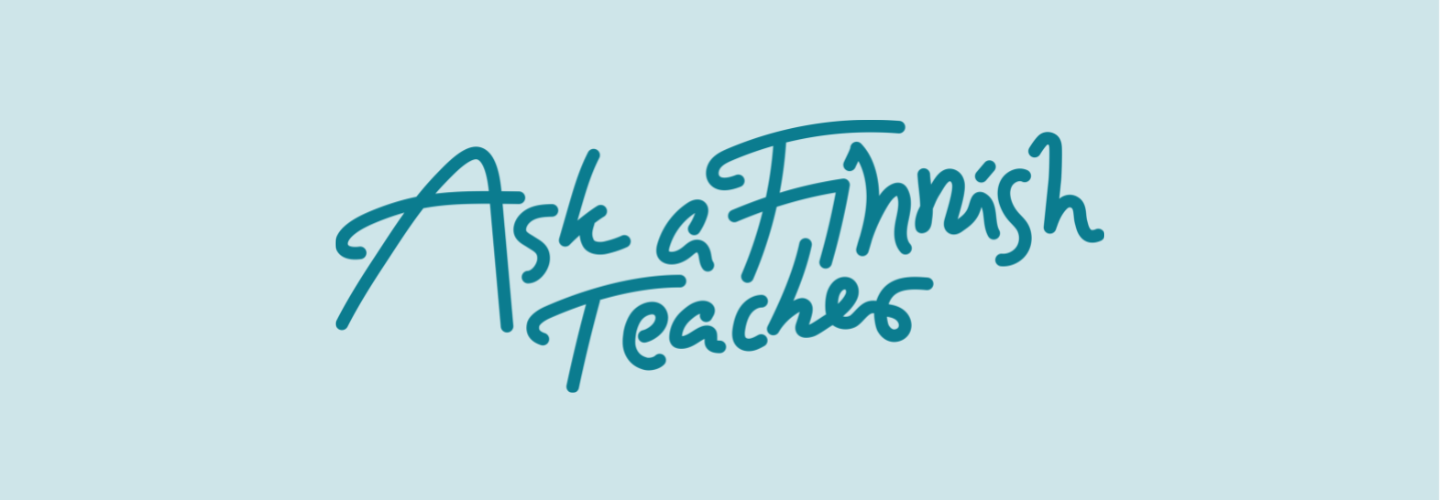


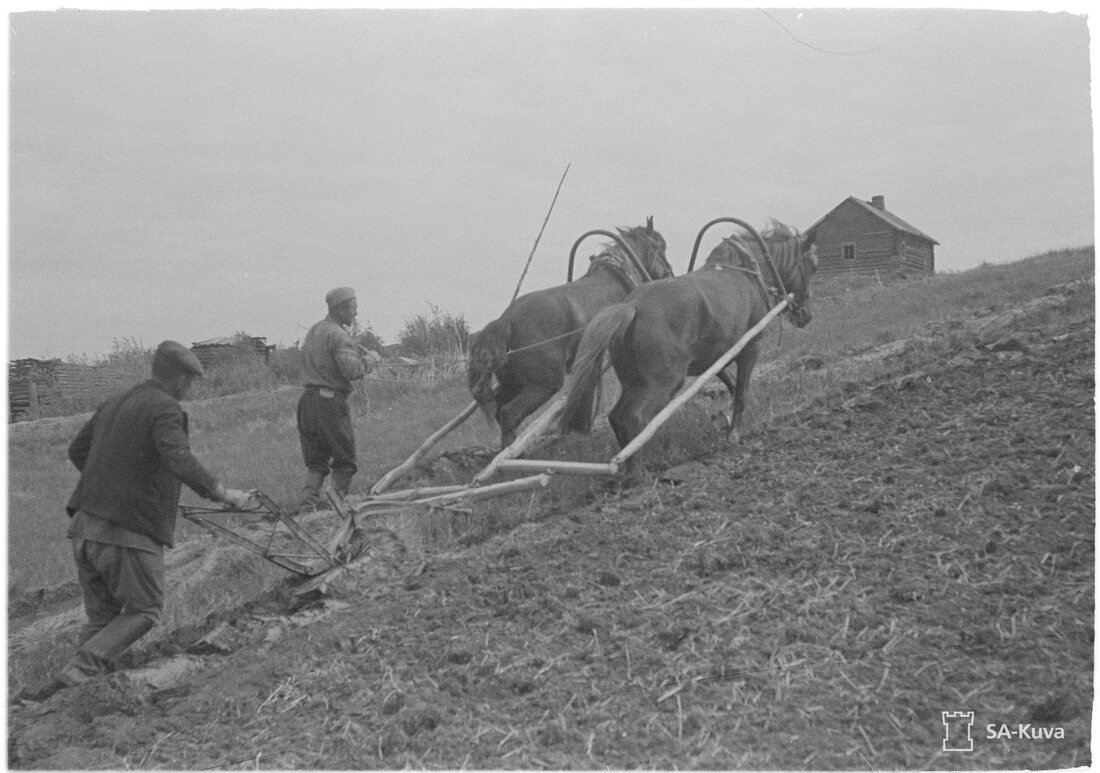
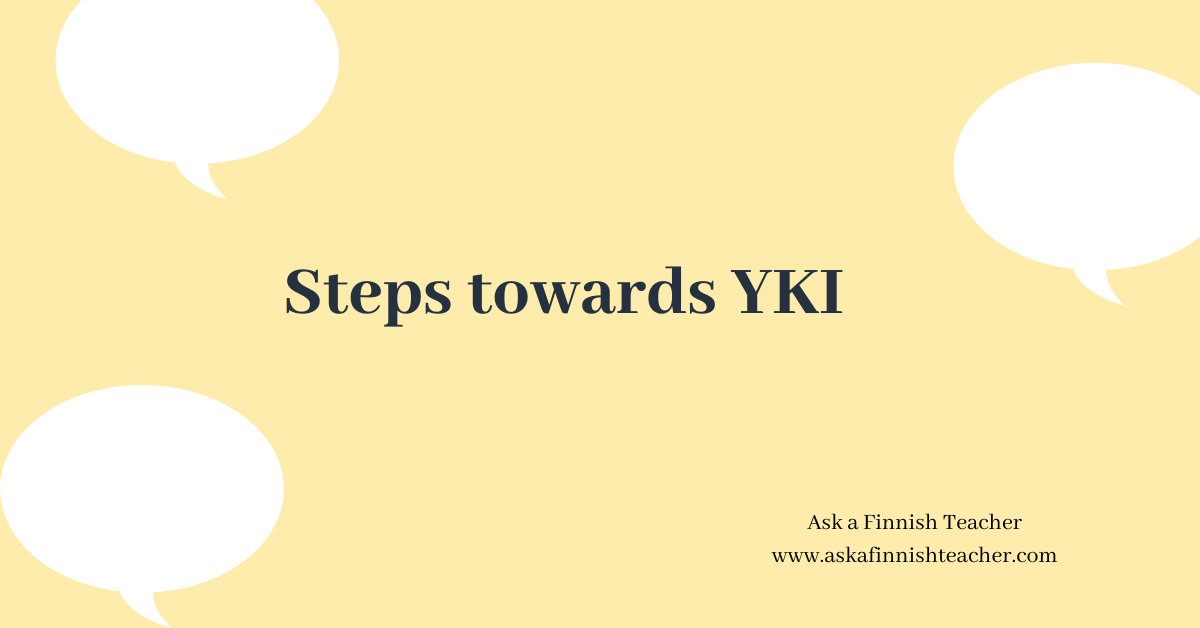

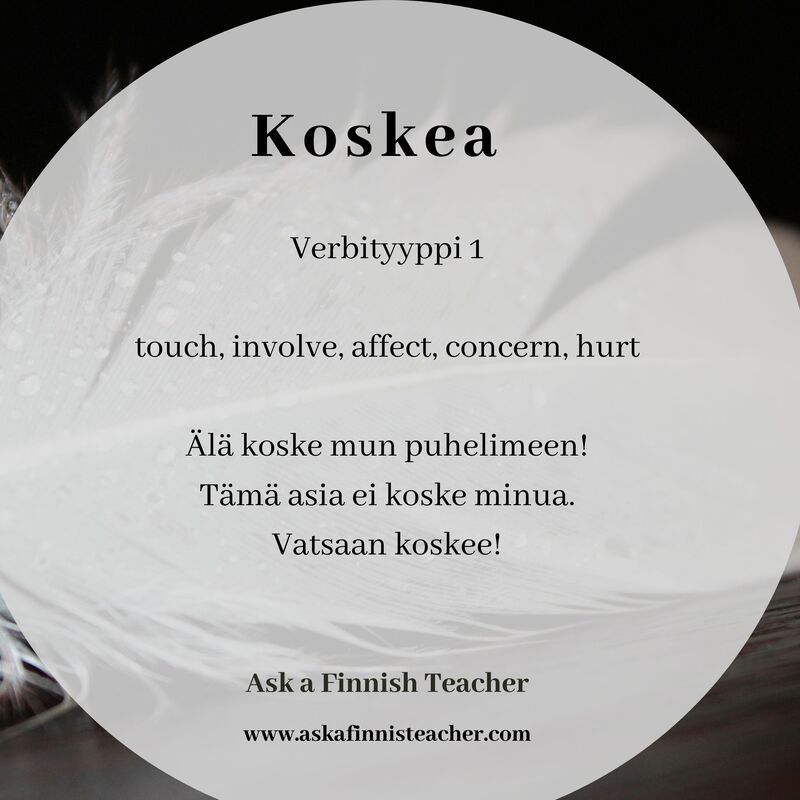
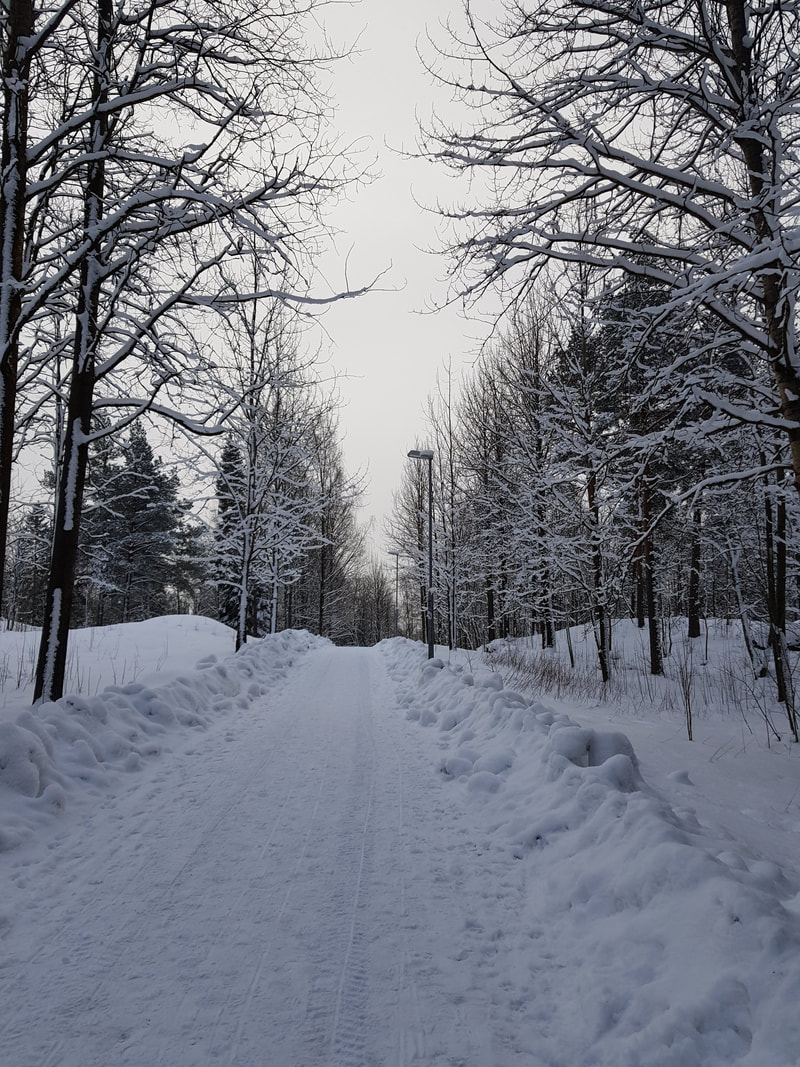
 RSS Feed
RSS Feed